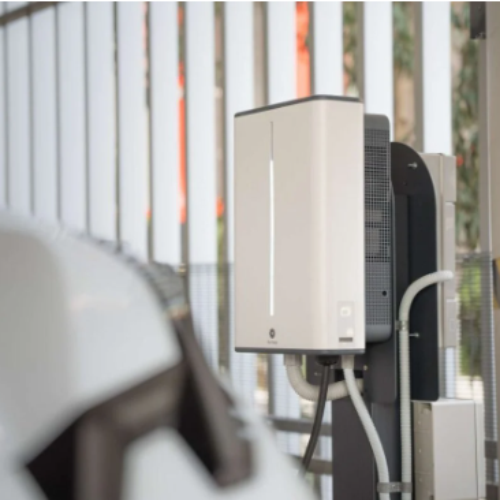Stephen Cirell looks into how local authorities might be able to break into the energy storage market by aggregating capacity from EV fleets and embracing nascent vehicle-to-grid technology.
On 2 March Clean Energy News reported from Solar Media’s Energy Storage Summit 2017, during which I led a session on local authorities and the energy agenda which covered a wide range of issues.
Sam Goss of Octopus Energy commented that forecasts for the growth of energy storage in the UK do not include the growing presence of electric vehicles (EVs), and that this was a mistake.
I have to agree with this view.
The value of EVs is something that many local authorities have been looking at for purely economic reasons. Normally, either casual car user allowances or essential car user allowances are paid to the many staff employed in local government who need to use their cars to undertake their duties. In large authorities the value of these payments can add up.
When I was the Director of the Green Cornwall Programme at Cornwall Council, the budget for car use was nearly £10 million each year. We therefore looked at the potential for developing a fleet of EVs within the ownership of the council that could be used for core journeys between the major office centres.
The business case was very simple. Buying an EV and requiring staff to use it instead of their own cars would cost the local authority less. Of course there are all sorts of other implications that need to be taken into consideration, such as the length and frequency of journeys, the willingness of the staff to participate and the issues re charging the vehicles.
But two developments have now raised this issue to a more heightened importance to local authorities. The first is battery storage and the second is vehicle to grid chargers.
Battery storage is now mainstream and there are many projects looking at every aspect of its potential, from simple time shifting, to avoiding grid reinforcement and frequency response. Batteries are undoubtedly going to be the future, particularly when linked to renewable energy.
The second issue is that under the first type of charger the electricity only went one way: from the building to the car. Now, V2G chargers are being trialled and the signs look good for commercial models to be on the market soon.
So back to that local authority fleet of EVs. Unlike a smaller organisation or company, large local authorities might have many cars on their fleets. In Cornwall we were considering over 200 vehicles to meet the purpose identified. The early Nissan Leafs had 24kWh batteries and so their range was limited. The newest Leaf has a 30kWh battery and a much better range. The new version due out later this year is likely to have an even larger capacity.
Of course this is the point that Sam Goss was making. Two hundred of the latest version Nissan Leaf vehicles would give a total battery capacity of 6MWh which, of course, would be equivalent to procuring a 6MWh battery system.
Whilst it is difficult to aggregate private vehicles into a block in this way (as the users might not be able to offer the unused charge on every occasion), these cars are owned and operated by the corporation. It is a simple concept to say that every fleet car that returns to the depot from its duties at 5pm on a weekday can discharge any remaining load into the grid at that time via an aggregation process and then be charged again overnight at much cheaper rates.
So this is one of the best ways of entering into battery storage, as it provides a major cost saving at the same time and also ticks a number of other boxes on the local authority’s energy agenda (particularly air pollution).
The significance of this has not yet been understood by many local authorities and offers an exciting prospect for the future.





